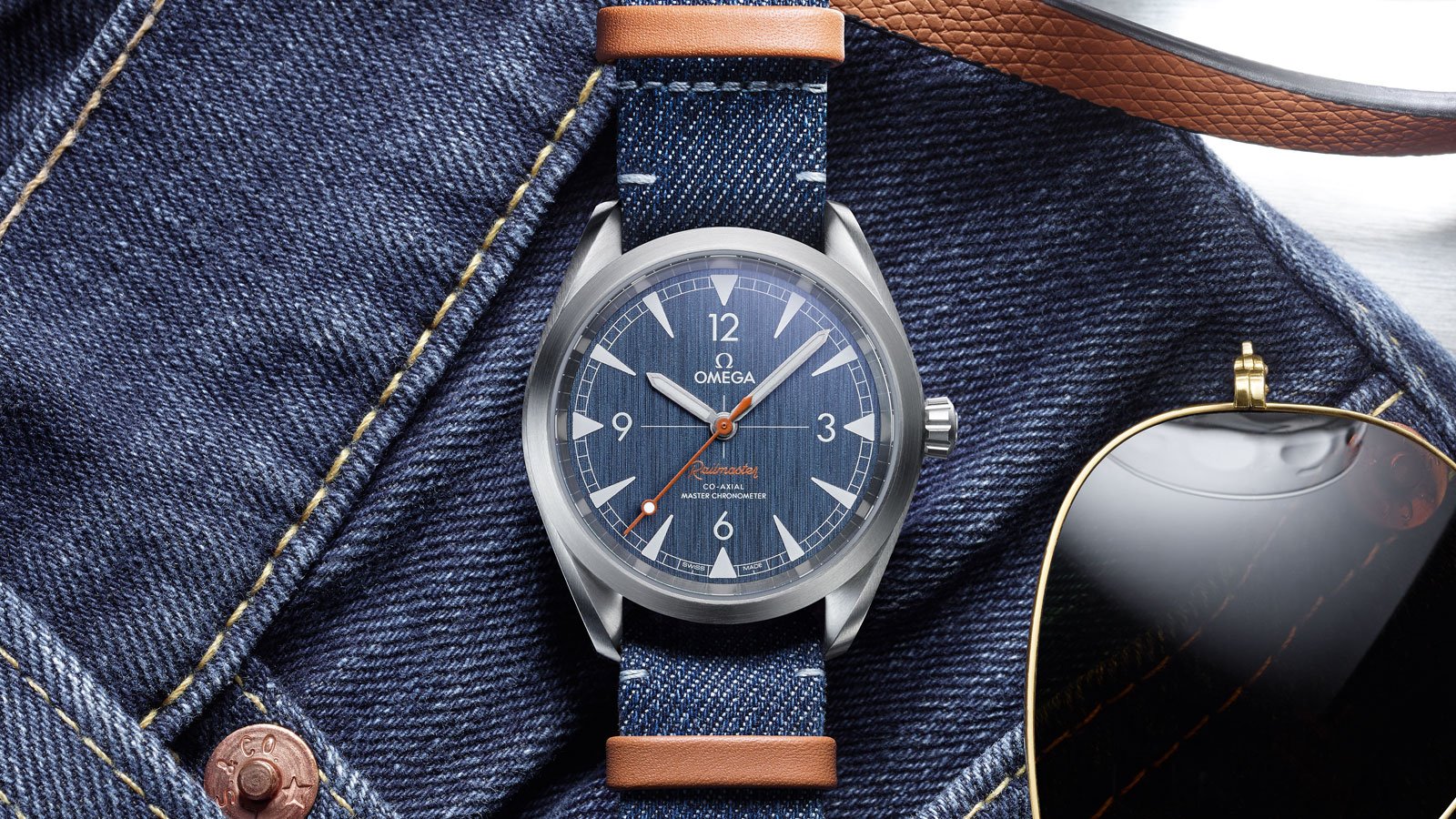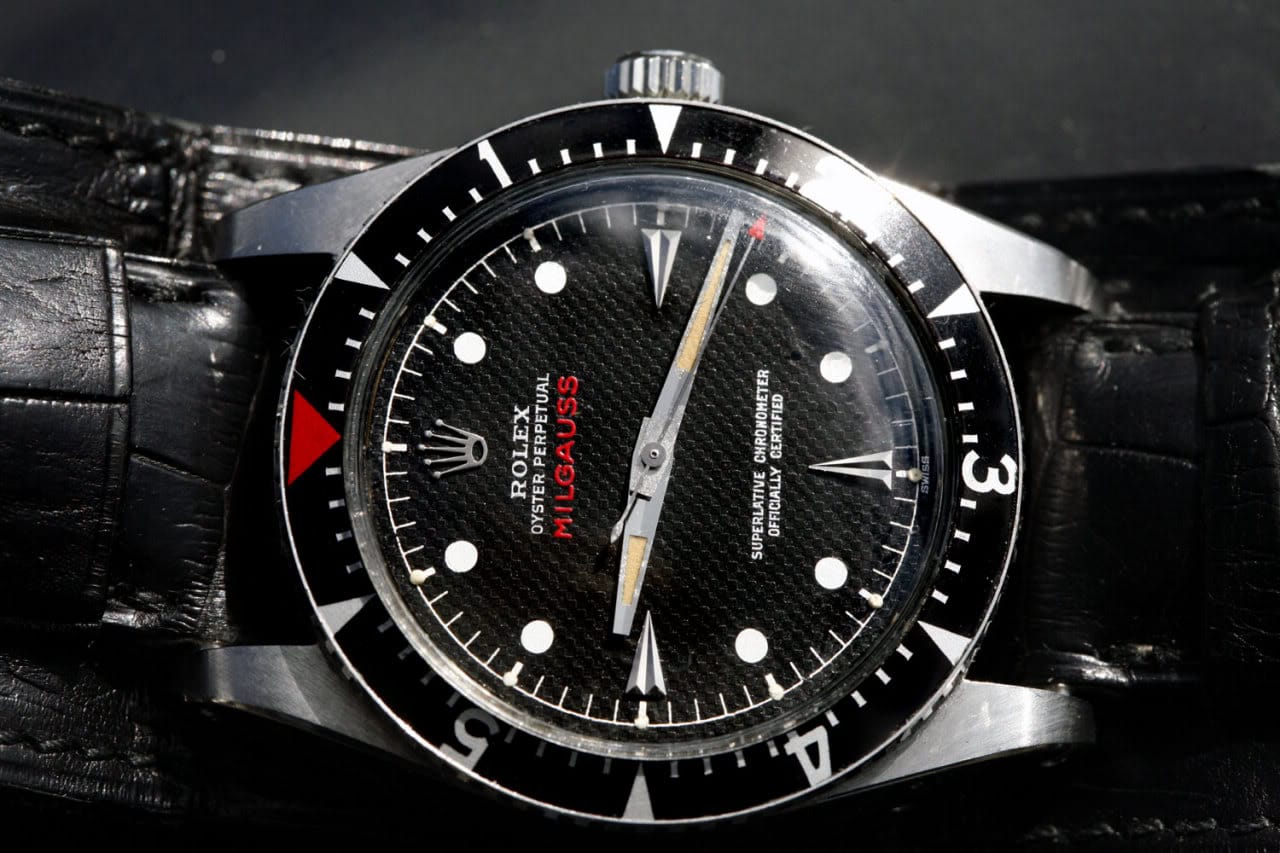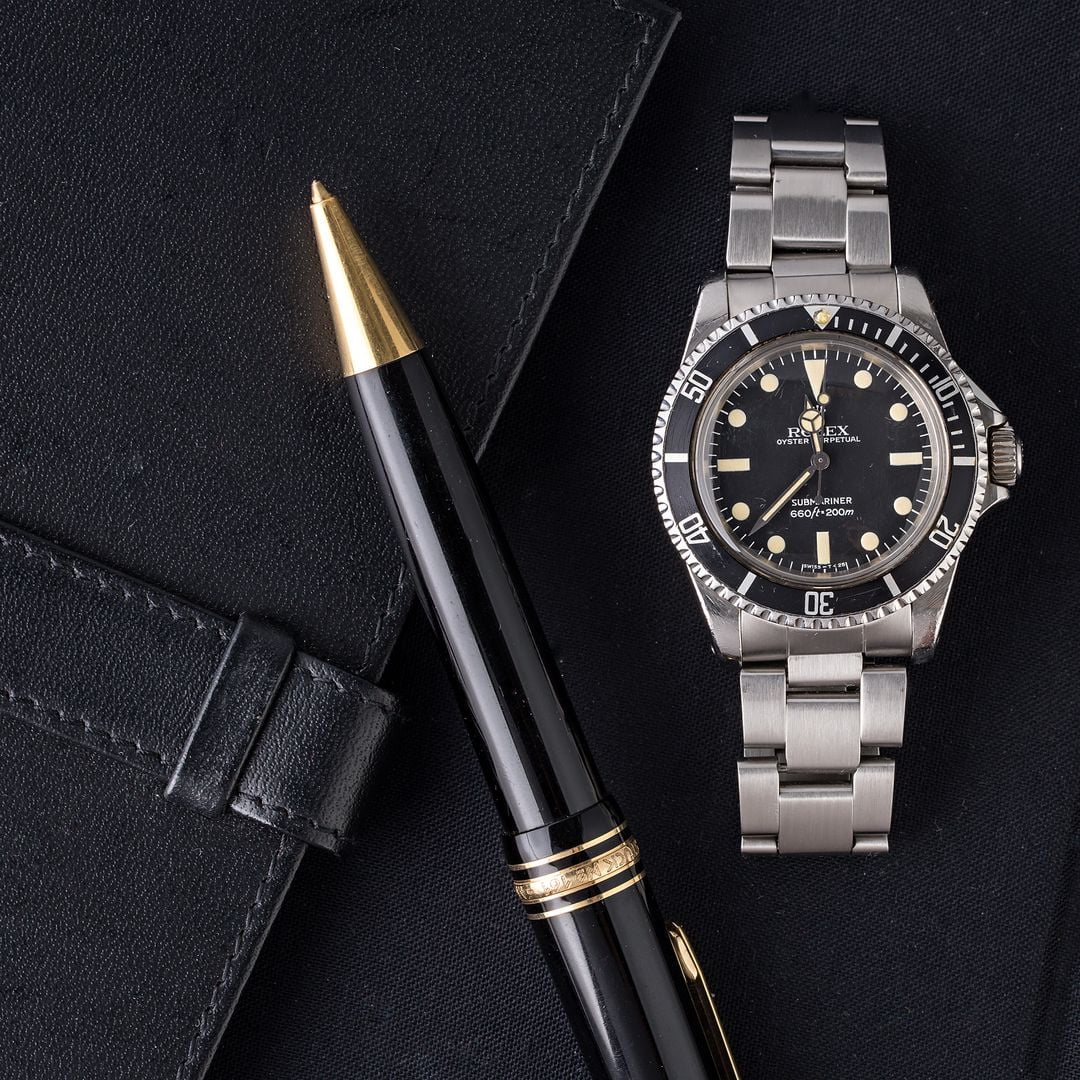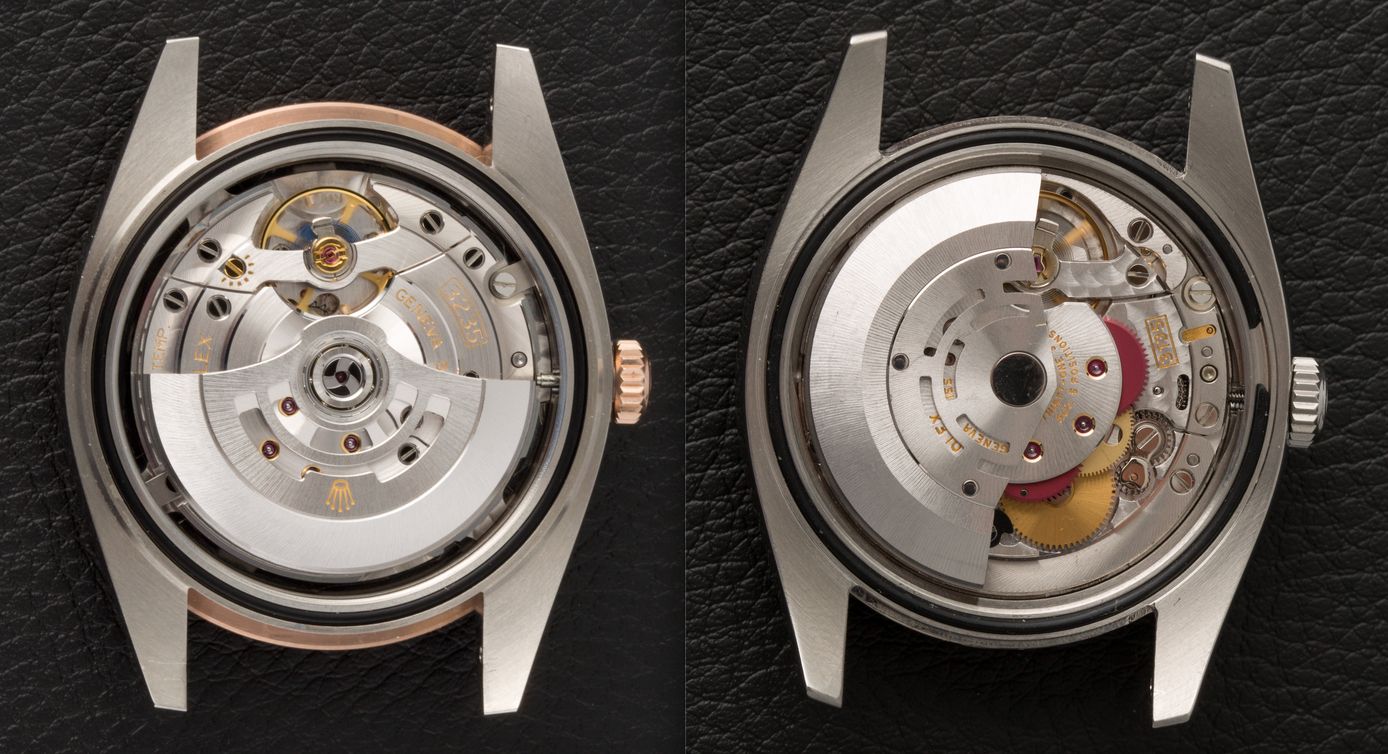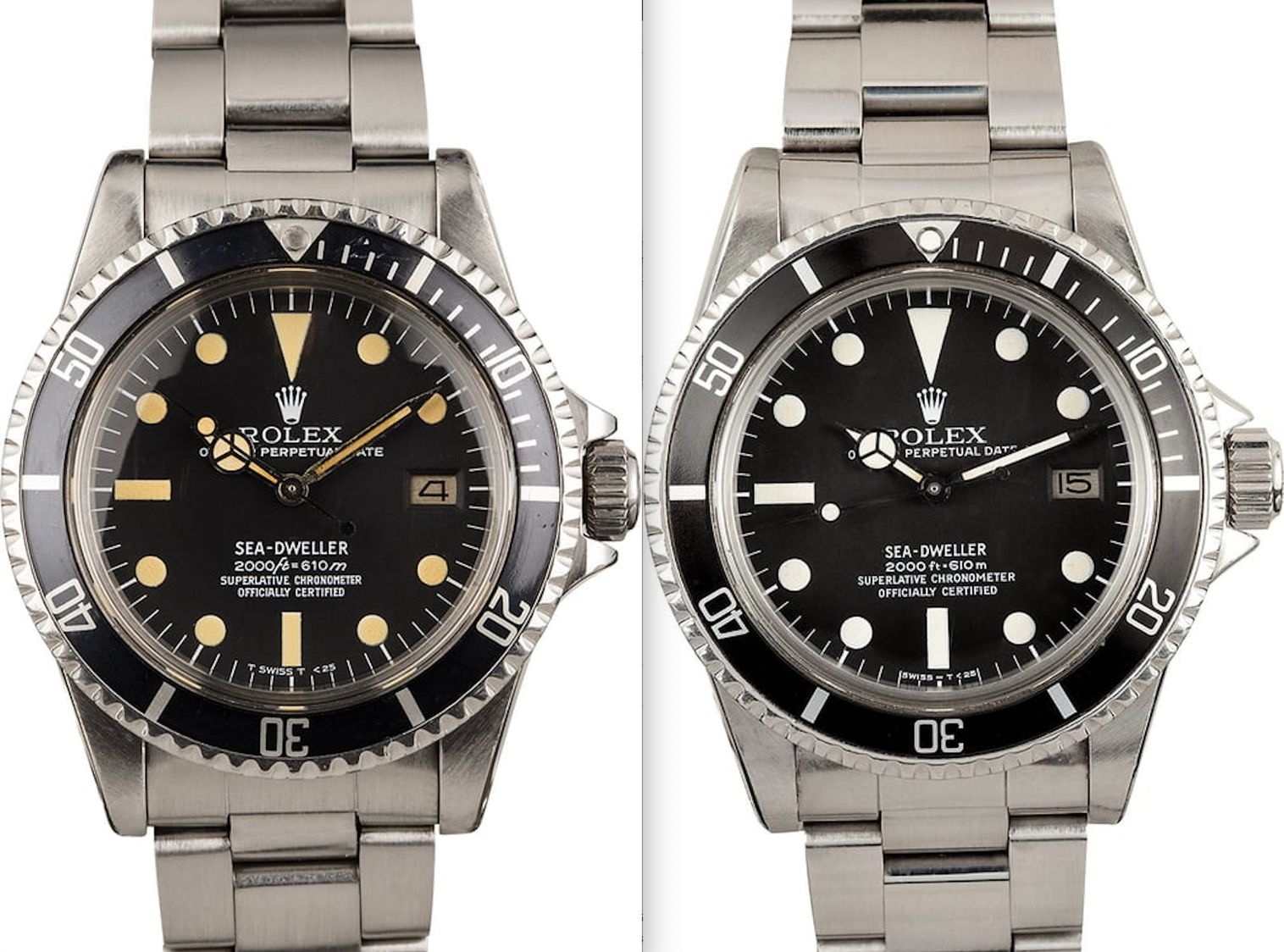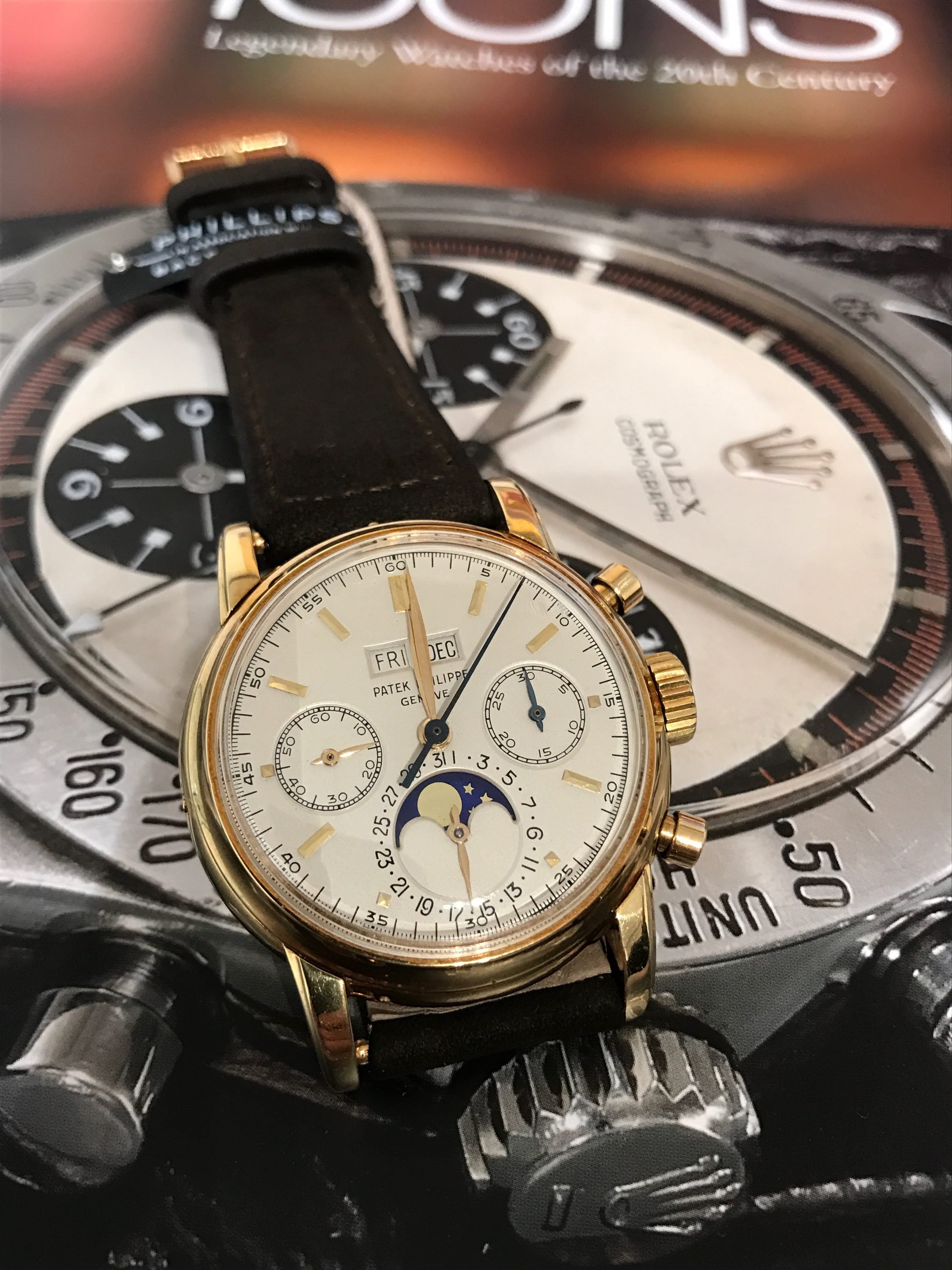The concept of watches being built specifically to aid certain professionals as they went about their occupation – tool watches in other words – really started in the 1950s, with Rolex spearheading the idea. By the end of that decade, divers and airline pilots both had models created explicitly with them in mind, in the shape of the Submariner and GMT-Master; however, the concept of scientist watches still did not exist yet. The popularity of the very first tool watches inspired many other manufactures to follow suit, leading to some of the most iconic designs in history.
Scientist Watches In The Atomic Age
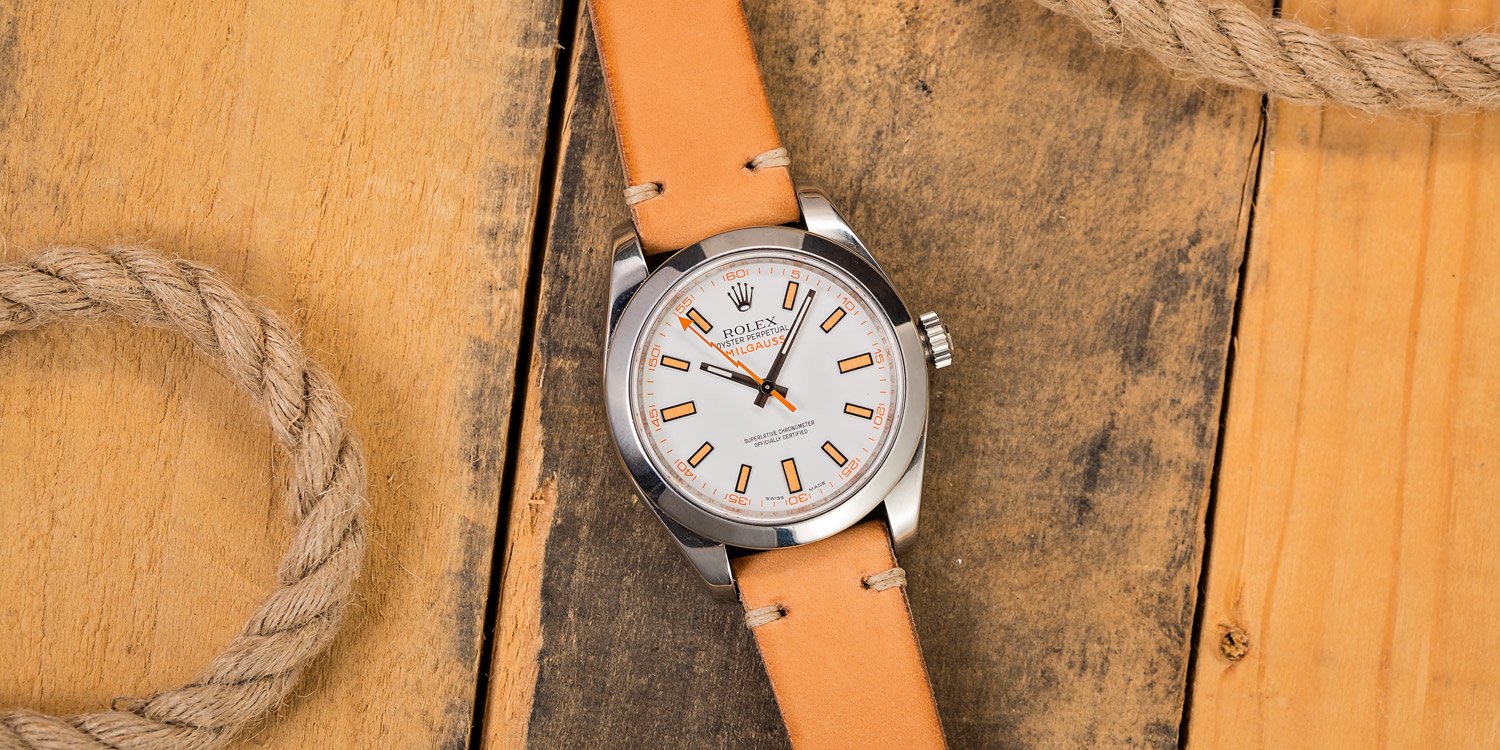
Key Features
Size: 40mm
Materials: Oystersteel (904L stainless steel)
Features: Time + running seconds; magnetic resistance
Bezel: Fixed; smooth stainless steel
Crystal: Green sapphire
Movement: Rolex Caliber 3131
Water Resistance: 100 meters / 330 feet
Bracelet/Strap: Oyster Bracelet (stainless steel)
Click here to learn more about the green sapphire crystal on the Rolex Milgauss.
This was also the dawning of the Atomic age, with huge strides being made across practically every scientific discipline. New technology brought with it new challenges, some of which were beyond the capabilities of the watches of the era. Perhaps most notably, the electromagnetic fields being generated by state-of-the-art equipment were strong enough to badly affect or even destroy the internal movements of mechanical timepieces. Especially susceptible components like the balance spring and escapement came off worst, and several watchmakers set themselves the task of addressing the issue, introducing models intended to be used by technicians and engineers working in highly magnetic environments. Many of those names from 60 years ago are still very much in existence today in their updated forms, and below we’ve highlighted three of the biggest – our favorite scientist watches.
The Rolex Milgauss
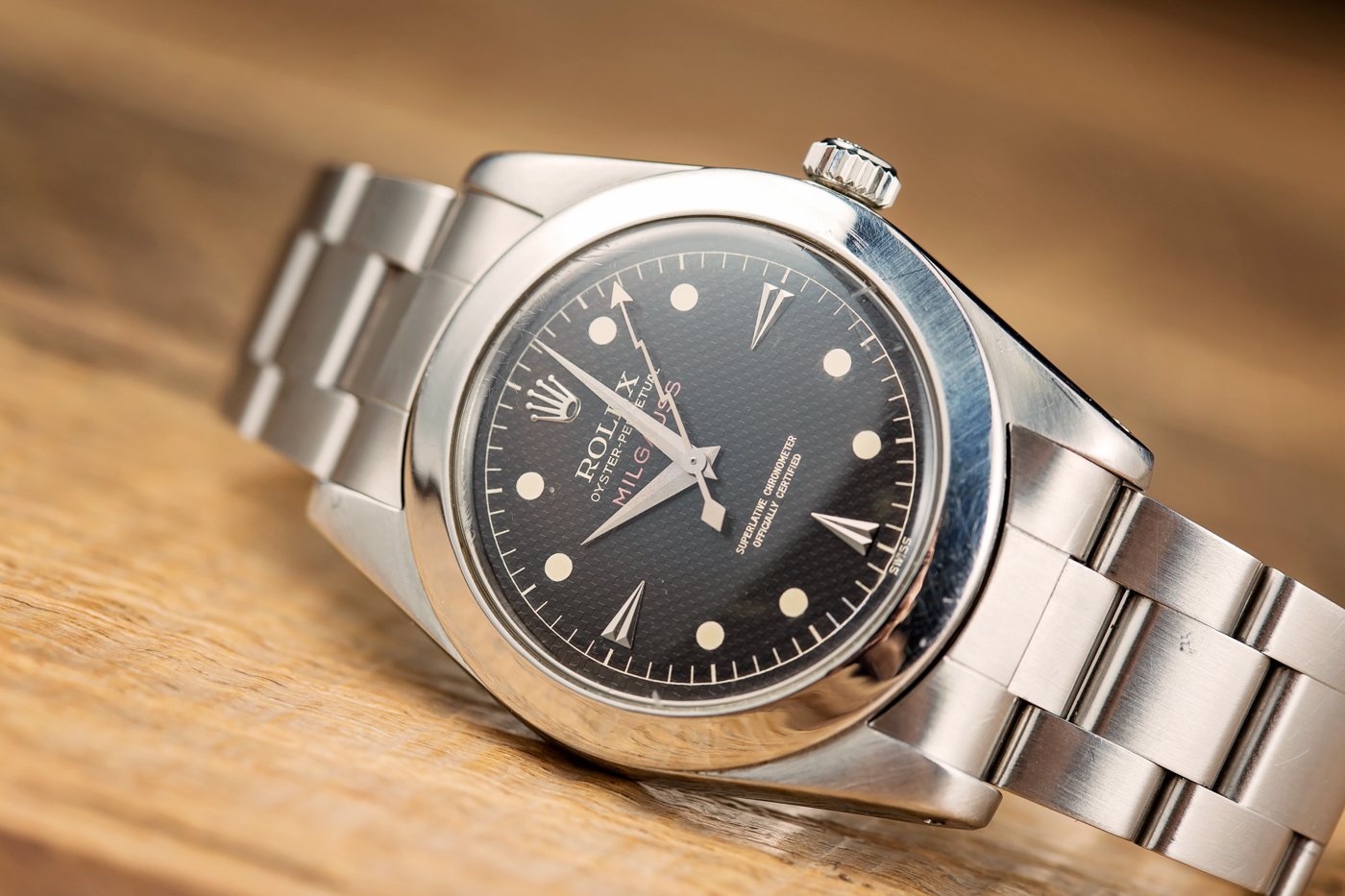
Probably the first model that springs to mind when talking about antimagnetic scientist watches is the Rolex Milgauss, which has gone from being a rare misstep in the brand’s history to become one of its cult heroes.
First released in 1956, it was – and has always remained, something of the understudy in the crown’s portfolio. It had the misfortune to be launched around the same time as two of Rolex’s (and horology’s) most famous creations, and suffered something of an image problem from the get-go. Underwater exploring and transcontinental travel were always going to ‘out-sexy’ the buttoned-down world of the scientist’s laboratory, and so the Milgauss became the forgotten Rolex, even with its formidable antimagnetic properties.
The Milgauss’s talents are spelled out in its name, with mille being the French for 1,000 and gauss being the unit of magnetic flux density. Together, they signify the watch can withstand exposure to huge electromagnetic forces – for reference, the international standard for ‘Magnetic Resistant Watches; ISO 764 (Horology)’ demands a model must be protected from a direct current field of 4,800 A/m, or roughly 60 gauss.
With the Milgauss, Rolex encased the watch’s movement in a Faraday cage made from soft iron. This redistributed harmful magnetic forces away from the movement’s most vulnerable components, ensuring its 1,000 gauss protection. Additionally, the earliest models, the ref. 6543 and 6541, which bore an uncanny resemblance to the recently released Submariner, were fitted with a “honeycomb” dial. As well as being a key aesthetic point, the crisscrossed metal acted as a further antimagnetic shield.
Both were short-lived efforts and were retired by 1960 to make way for the completely redesigned ref. 1019, a model that stayed in production for an incredible 28 years. As well as losing the original’s rotating bezel in favor of a smooth domed surround, the honeycomb dial was also replaced by a choice of either a plain black or white dial. Most importantly, the distinctive lightning bolt-shaped seconds hand which had been introduced on the second generation was gone, and was replaced with a simple straight one.
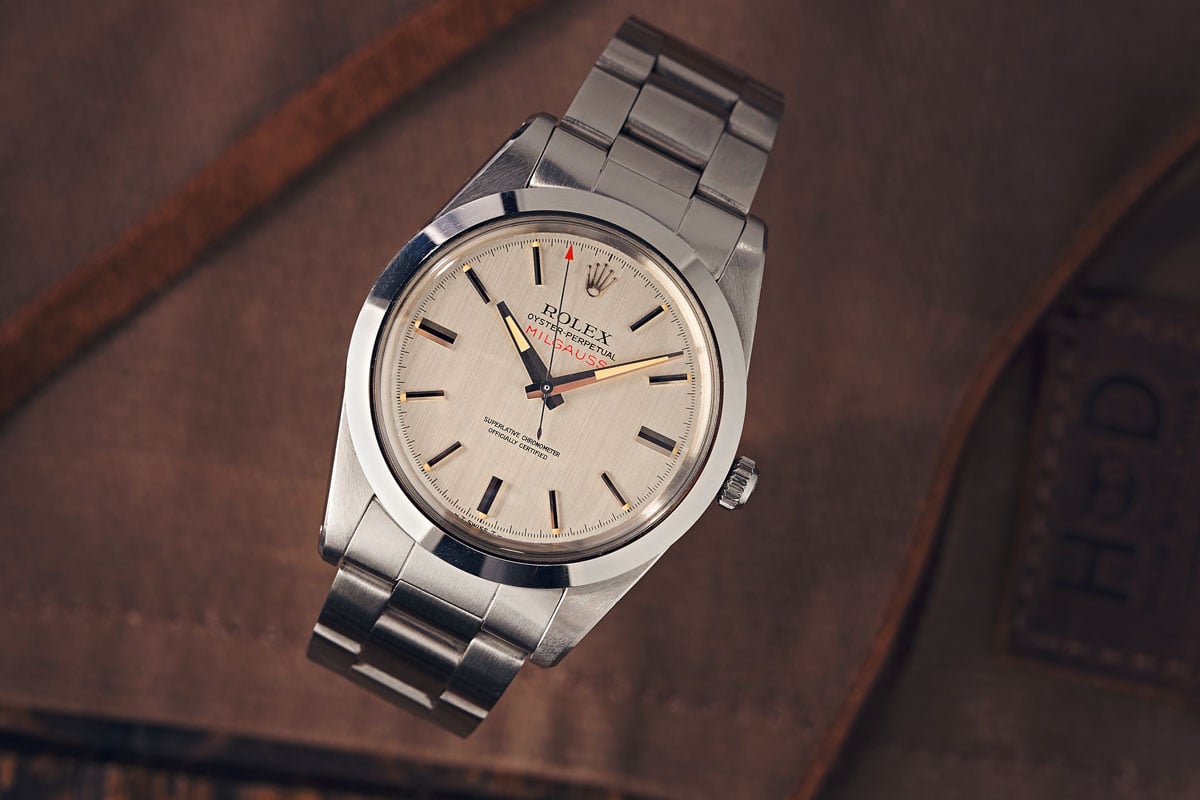
By 1988, Rolex admitted defeat and discontinued the Milgauss completely. Most thought that was the last of Rolex’s scientist watches; however, to celebrate the completion of CERN’s Large Hadron Collider, the 27-kilometer long particle accelerator buried beneath Geneva, the Milgauss made a triumphant comeback in 2007 in the shape of the ref. 116400. A thoroughly modern update on the classic design, the three 40mm steel versions came with either a black or white dial, along with a very special, anniversary edition – again in black, but encased behind a beautiful green-tinted sapphire crystal.
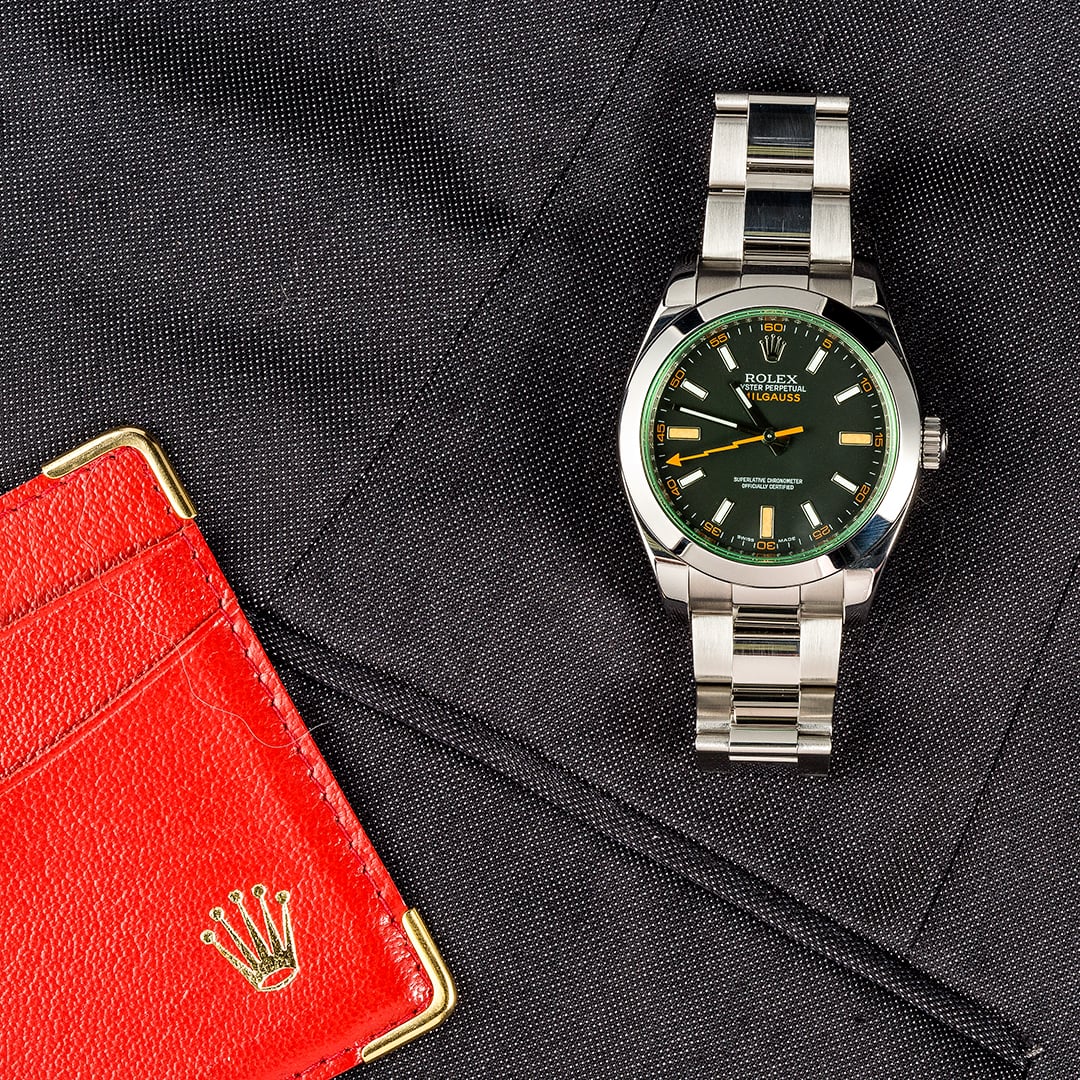
Much to the joy of the faithful, that unique lightning bolt seconds hand was back, lending the Milgauss a touch of whimsy absent from the majority of the Rolex range. Since then, the Milgauss lineup has been joined by the Z-Blue dial variation, with its characteristic sunburst face. While it is still a watch somewhat in the shadows compared to its professional model stablemates, it is currently enjoying something of a revival with collectors.
As one of those watches that has stuck closest to its roots and resisted the allure of precious metal cases and diamond-accented hour markers, both vintage and contemporary Milgauss references are becoming increasingly sought out by purists. Its modest, straightforward design and interesting backstory have seen prices on the pre-owned market steadily rise, and its antimagnetic abilities make a lot of sense in the modern world, where everything from refrigerators to hairdryers pump out potentially harmful forces. After an also-ran status lasting over 60 years, the Milgauss is finally getting the recognition it deserves.
The IWC Ingenieur
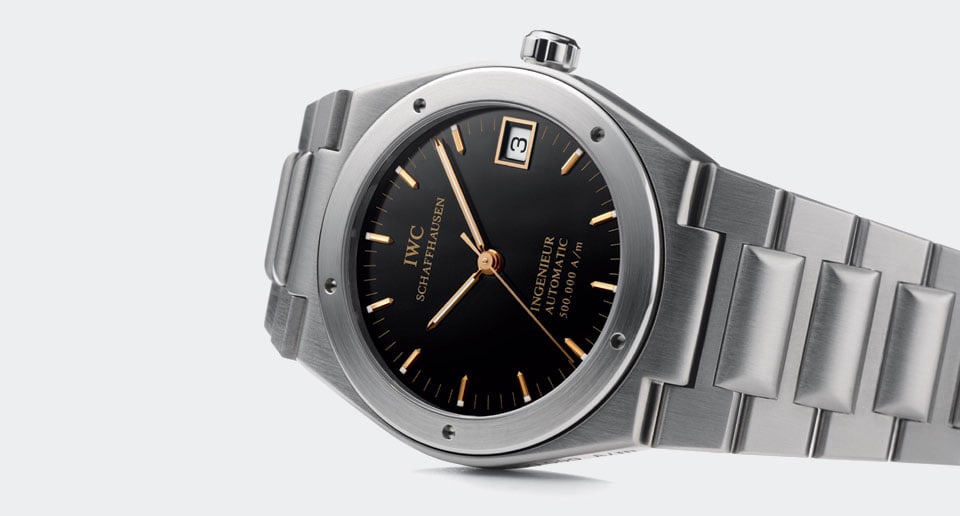
IWC were among the first manufacturers to utilize the concept of an internal Faraday cage in their designs when they created some of the earliest dedicated pilot’s watches during the 1930s. Aircraft engines were, and still are, sources of powerful magnetic fields, and the brand went on to become the official supplier to the British Royal Air Force in 1948, with the legendary Mark XI. It was that piece that would ultimately form the basis of the first of the Ingenieurs a few years later in 1955 – a military watch refashioned for a civilian market, one of the very first scientist watches.
The debut references, the 666A and the 666AD (identical save for a date function on the latter) featured different dials and a more elegant handset than the Mark XI, but maintained the same electromagnetic protection, matching Rolex’s effort of 80,000 A/m or around 1,000 gauss. Additionally, the IWC Ingenieur came in gold as well as stainless steel versions, lending it a more versatile and luxurious edge. Internally, its in-house caliber 852 movement (or 8521 for the date model) beat at 19,800vph, which was particularly fast for the era and afforded the watch greater precision and increased shock protection.
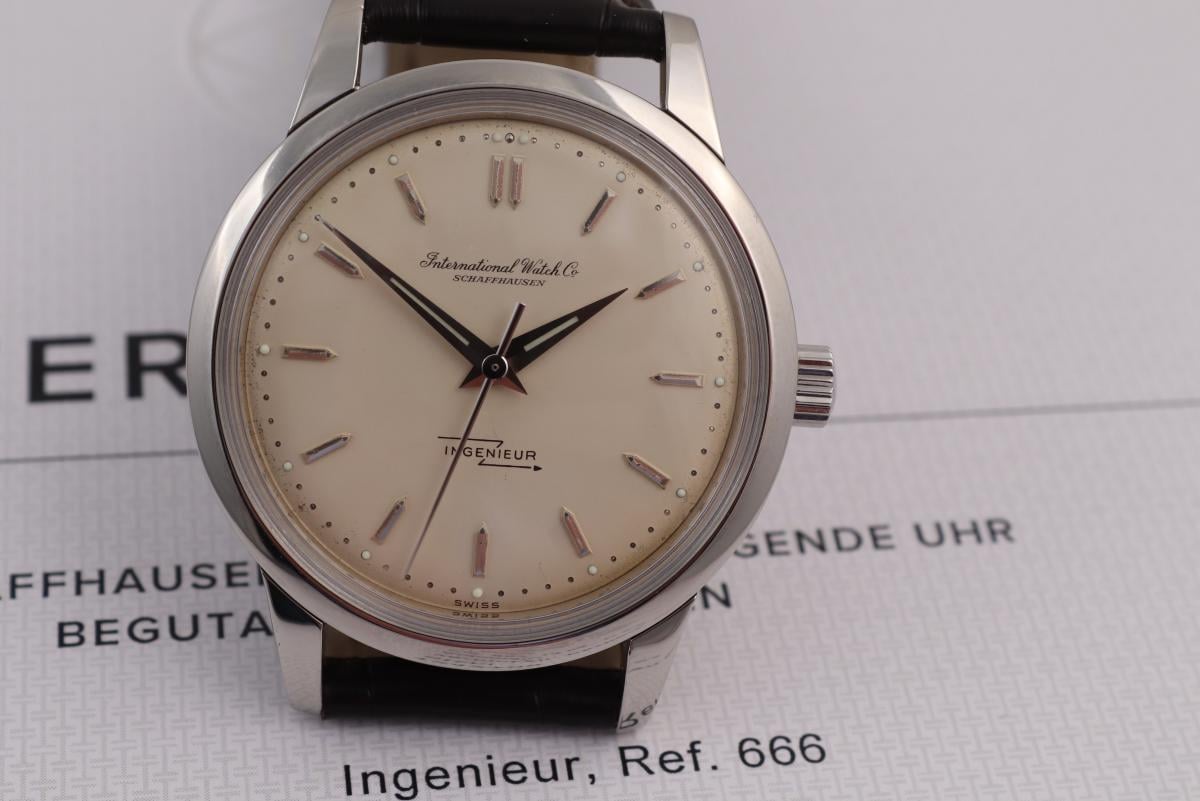
Due to the accuracy of its timekeeping and hardiness as an everyday wear, the Ingenieur became a popular choice among scientists, doctors and engineers, as well as civil aviation pilots. It went through a number of small modernizations over the next 20 years or so, before IWC enlisted the help of perhaps the most famous watch designer of all time to completely revise the Ingenieur’s appearance – Gérald Genta.
Fresh from his success with the Audemars Piguet Royal Oak, Gérald Genta transferred much of the same styling language to the new Ingenieur SL 1832, released in 1975. The large, tonneau-shaped case and integrated bracelet were carried over, and it was given a round bezel with Genta’s signature five exposed screws holding it in place. At 40mm, it was one of the larger watches of the time, earning it the nickname the ‘Jumbo’ among collectors and enthusiasts.
On its launch, the Ingenieur SL 1832 came in a choice of three dial designs, with a black checkerboard version attracting the most interest; however, even still, its sales were particularly poor. In eight years, IWC sold fewer than a thousand examples, largely due to the watch having the misfortune of arriving at the height of the quartz crisis. IWC even brought out two quartz editions themselves, but they were met with the same lack of sales success; there was simply not a lot of public interest in scientist watches. These days, of course, vintage 1832s fetch incredibly high prices on the pre-owned market.
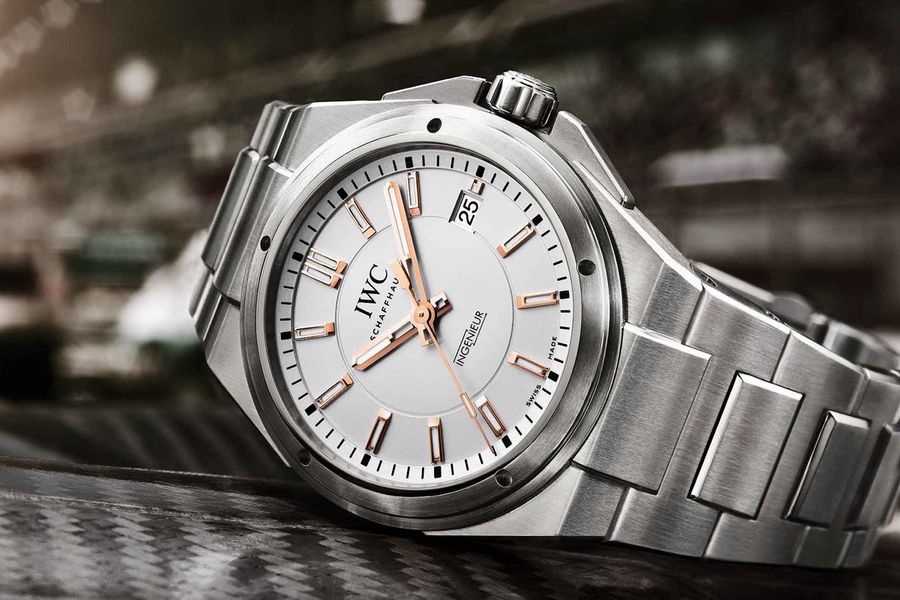
Since then, the technology inside the Ingenieur has progressed dramatically, with new paramagnetic materials being used in place of the traditional Faraday cage. In fact, among the current collection, only the Automatic ref. 3239 still has a soft iron shield. Today, you will find chronographs and perpetual calendars alongside the simple three-hand and date models, with Genta’s porthole-inspired shape providing a more timeless aesthetic. Despite the cosmetic changes and diverse offerings, the objective if the Ingenieur has stayed consistent, offering up superb timekeeping reliability, regardless of the outside environment: a highly capable companion for those working in demanding conditions.
The Omega Railmaster
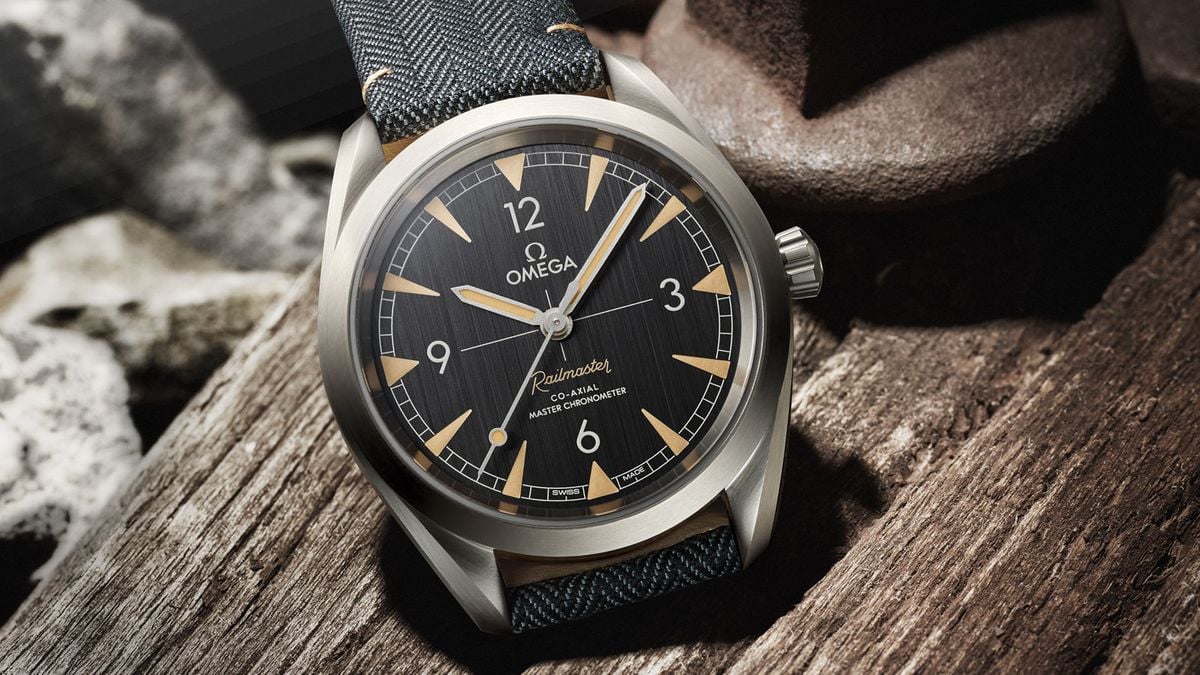
Omega’s first scientist watches arrived as part of a trio in 1957, alongside two other models that have since gone on to become industry icons; the Seamaster and the Speedmaster. Like Rolex’s Milgauss, the Omega Railmaster has never been on the same level (reputation-wise) as its all-conquering brethren; however Omega has had at least as long of a history with antimagnetic watches as any of their competitors – the brand was building prototypes as early as 1952. They had even performed a limited release (in Canada) of a production model in 1953, with the ref. 2777.2.
The lessons learned from that watch went into the make up of the first of the Railmaster, the CK2914. Protection was again provided through the use of a defensive cage shrouding the movement, which was made from a soft iron that the brand christened “NuMetal,” while the movement itself was copper finished. To further increase magnetic resistance, the dial was thickened as well, up to 1mm rather than the standard 0.4mm. The additions made the Railmaster the first Omega able to withstand the magic number of 1,000 gauss.
However, scientist watches simply were not popular at the time, and Railmaster sales were rather poor, especially compared to its companion pieces destined for the racetrack and the world of underwater adventures. Consequently, it was discontinued in 1963, just six short years after its initial release. The rarity created by the limited production run has made the first generation models highly sought after by collectors, and its status as the forgotten watch from the original “1957 Trio” has started to work in its favor within the last several years.
The Railmaster would not see the light of day again until 2003. Omega used the interim to develop their Master Co-Axial movements, the first truly antimagnetic calibers the industry had ever seen, able to shrug off forces up to an unbelievable 15,000 gauss. The reissued Railmaster was available in three sizes; 36mm, 39mm and 42mm, and the range also included a chronograph version. Styling was very much based around the entry-level Aqua Terra, and because the new watch no longer had a need for an internal Faraday cage, Omega included a display caseback to show off their revolutionary mechanisms.
However, in an uncomfortable instance of history repeating itself, the refreshed Railmasters were also flops in sales numbers, and the series was discontinued for a second time in 2012. Even the mammoth 49mm Railmaster XXL from 2008 was withdrawn, which was one of the most gossip-worthy efforts of recent times. It seemed as though the historic trend of scientist watches being unpopular was too great an obstacle for Omega to overcome.
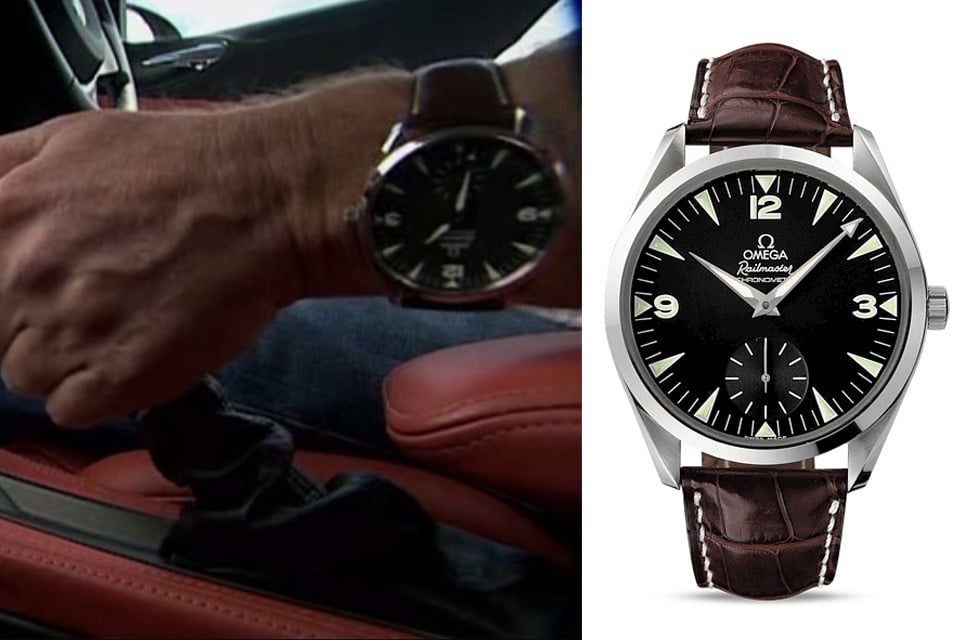
It would take another five years before the Railmaster name resurfaced again, this time in 2017 for the 60th anniversary of the release of all three “Master” watches from 1957. This time, Omega dialed up the nostalgia to the nth degree, creating a limited edition run of 3,557 pieces, all designed to the exact specifications of the original CK2914 – outwardly at least. The dimensions came in at a period-correct 38mm, while the bracelet, dial, and handset were identical, with the indexes filled with faux-aged lume.
However, internally everything was cutting edge, with the silicon-rich Omega Caliber 8806 ensuring the massive magnetic resistance required by scientist watches. At the same time, a non-limited edition 40mm model also emerged, again with the 8806 running the show, and was released as part of the brand’s Seamaster collection.
Today there are a total of six watches in the awkwardly titled, Seamaster Railmaster collection – a range of simple, handsome, and extremely capable timepieces with brushed steel cases and Omega’s signature twisted lugs. It, like the other examples in our list of scientist watches, may never be able to compete with the real heavy-hitters in their respective manufacturers’ catalogs; however, each has its own charm – along with the peace of mind that comes from knowing that they can easily withstand the biggest enemy of mechanical timepieces.
